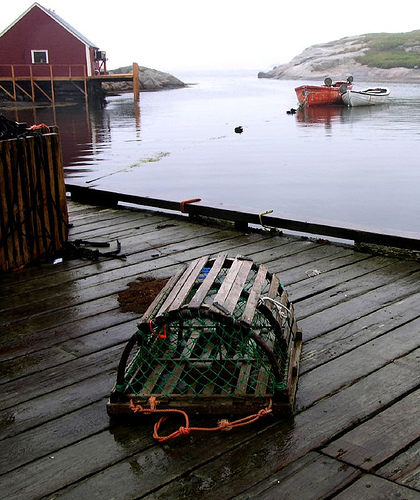Although the shaky economy means hard times for all in the culinary world, some have been hit particularly hard—especially those working with the foods considered luxury buys. But while caviar and champagne have been holding their own, the lobster hasn’t fared nearly as well.
As Katie Zezima notes in
The New York Times, low lobster demand doesn’t just mean a bad summer season; it puts the future of the industry in jeopardy. Lobster prices are down across the board. To chefs and diners, this may feel like good news. A steamed lobster on your dinner plate costs, on average, four dollars less than it did last summer; a vendor buying right off the boat pays about a dollar less per animal. Chefs are finding the lobster a more affordable venture than ever before, with many adding the once prohibitively expensive creature to their late summer menus.

Eventually, the plummeting prices may pick up demand just a bit; lobster rolls no longer feel like an indulgence if they’re hardly pricier than chicken salad. But those hauling in the traps aren’t reassured. With fuel costs higher than ever before, and each lobster caught catching less of a profit, lobster fisherman are working later hours, setting traps longer—and, in some cases, leaving the waters behind altogether. Zezima notes, incredibly, that the average age of a lobster fisherman is 59 years old. And with even these hardy souls taking on second jobs in order to pay the bills, many worry that the struggling industry just won’t draw in a new generation.
As lobsters grow cheaper, demand may stir; an eventual dip in fuel prices may lower operational costs. But the fewer boats on the water, and the more lobster traps lying empty, the harder it will be to bounce back.